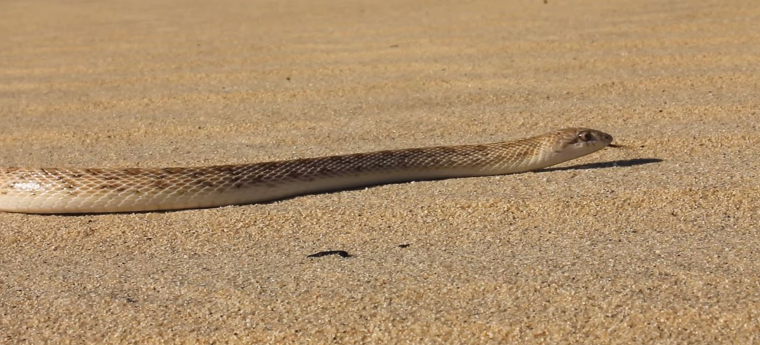-
info@aaanimalcontrol.com
Call us for help in your town
Humane Wildlife Education
How do snakes move?
Need snake removal in your hometown? We service over 500 USA locations! Click here to hire us in your town and check prices- updated for year 2020.
Snakes actually have four main ways of getting around, and the kind of movement that they use will often depend on the species that you are looking at.

1 - Sidewinding
These snakes often live in areas of heavy sand, such as the desert, and use a “sidewinding” motion in order to move around. The smooth surface of the ground doesn't offer much in the form of resistance, and this allows the snake to form an S-shape with its body, with two main points on the ground, and then projecting itself forward from those points. Sand isn't the only ground type that offers this low-resistance surface; slippery and loose materials or substrates also make the perfect ground for this kind of snake movement, and this can include tidal mud flats.
This movement allows a snake to move very fast, with very little of its body actually touching the ground. The sidewinder rattlesnake is a perfect example of a snake species that uses this movement type.
2 - Serpentine
Another S-shaped movement type, the serpentine style of snake movement is similar to the sidewinding action, using options, such as the ground or rocks, on order to project themselves forward from an initial point of contact. The wave-shaped motion, also known as “lateral undulation” enables snakes to move quite quickly, but only on certain surfaces. They would not be able to use this movement on surfaces like slick or wet glass. Water or land, on the other hand, would be no problem for this serpent.
3 - Caterpillar
Just as the name suggests, snakes that use the caterpillar motion of movement look very much like ... well, a caterpillar. It's a slower way of moving than the others that we've mentioned already, but it still does the job, slowly up-and-down movements contracting the snake along on its way.
4 - Concertina
This is the best way for a snake to climb up a vertical surface, such as a wall or a tree, and as long as the snake's powerful muscles are able to grab a'hold of whatever surface it is climbing. The head moves first, heading right in the direction the snake wants to travel, usually upwards if it is using this concertina action. The ventral scales are found on the underside of the snake, and these works in much the same way as tire tracks on a slippery road surface, helping the snake to grip on and hold tight when it needs to. The center of the snake's body will act as the gripping action here, propelling itself forward be elongating the neck and head once again.
Snakes actually have more ways of moving around than you first perhaps may have thought, enabling the animal to get in some pretty weird and wonderful spots. If you have lost a snake in your home or building, or you suspect that one might just be hanging around, proceed with caution. You never know where the serpent will end up!


















